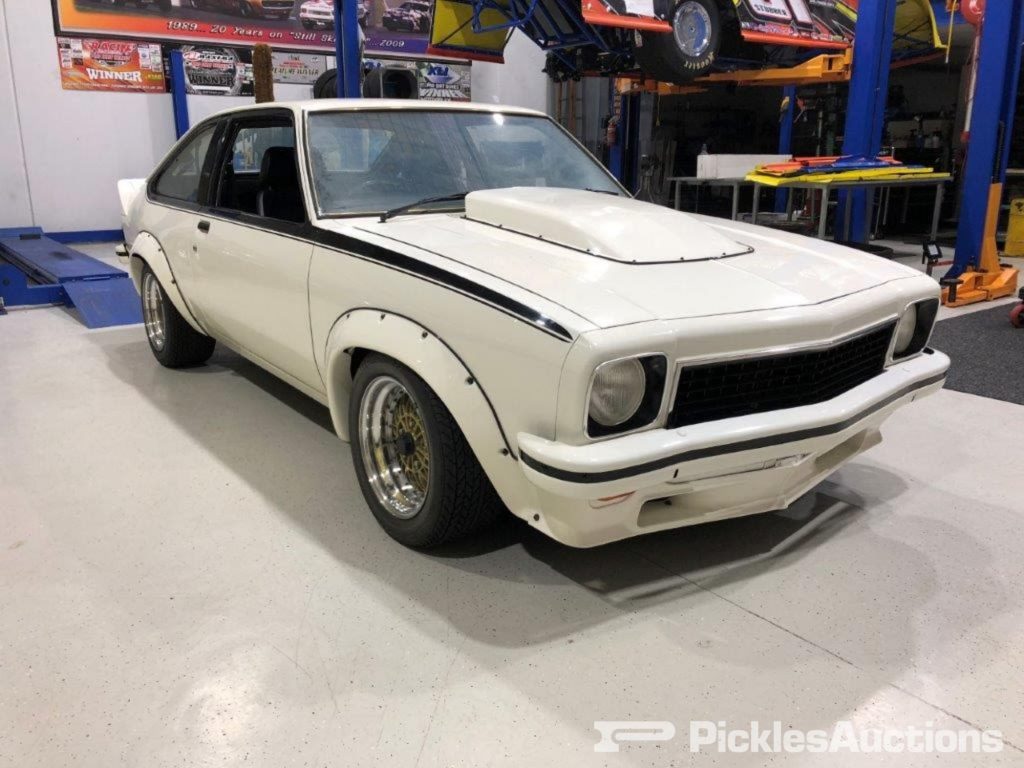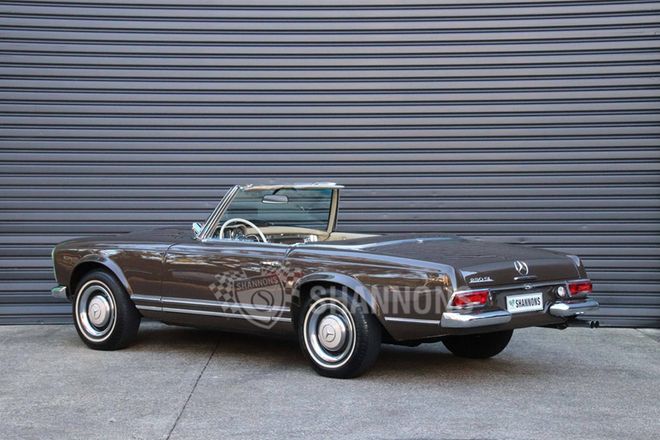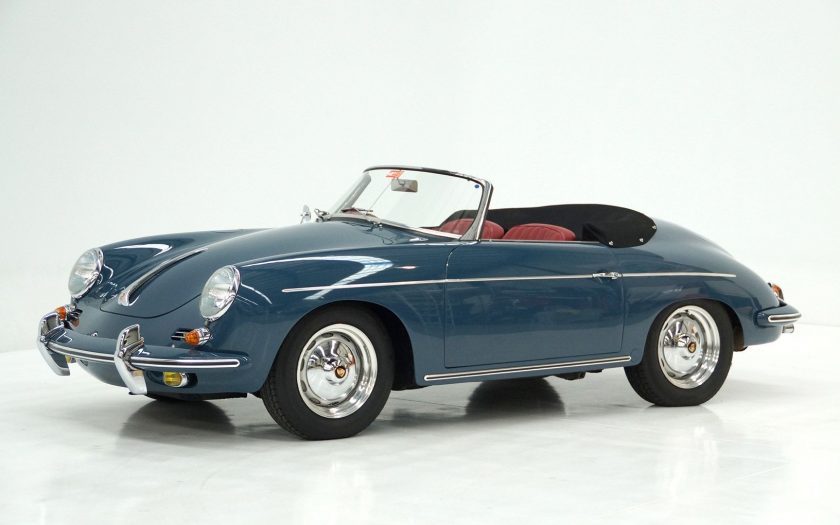Cars you couldn’t afford when they were new are very tempting when they get old, but there’s plenty to consider before you make the leap.
MANY, MANY YEARS AGO, I worked with a managing director in Melbourne. As part of his no doubt very generous salary package, he was entitled to a new car every three years. But every time he traded in his barely used luxury car for a new one, the amount it had depreciated would make him miserable.
Now, this MD had always lusted after a Porsche 356 roadster, but never been able to justify having one as a hobby car. And being a creative sort of fellow, he came up with a cunning plan that would keep his wife happy, his bank manager happy and indulge his desire for a Porsche.
He sat down and did the numbers and could prove that buying a restored 356 would cost about the same as the new luxury model he was entitled to as part of his package (as I said, this was a very long time ago!) If he allocated the same annual sum to maintaining it as he would otherwise spend on servicing his luxury car, he could ensure the 356 stayed in tip top condition. He also concluded that by not replacing a fast-depreciating luxury car every three years, he could have the 356 almost fully restored whenever it became necessary and still come out ahead financially.
And that’s exactly what he did.
At the time, many people thought he had lost his marbles, but without exception, everyone admired the beautiful, pristine black Porsche 356 roadster. I know he still owned it a few years ago and it was worth a considerable sum. If he still owns it today, it will be worth well into six figures.
Clever man. For many years he’s been driving the car of his dreams, keeping it in concours condition and owning an asset that has increased in value.
Some years later, I restored a Triumph TR3A and when it was finally complete, drove it proudly into my office car park where everyone oohed and aahed over its shiny black paintwork, gleaming chrome, smart red upholstery and white tonneau and soft top. My business partner was smitten. He confided in me that he had always wanted to own a Mercedes-Benz 280SE 3.5 coupe, built in limited numbers between 1969 and 1971. He told me he thought now would be a good time to buy one and use it as an everyday driver.
I desperately tried to talk him out of it. This was a complicated 20-year-old (at the time) car, expensive and rare when new. Mercedes-Benz parts, while usually available were expensive and because his would be a rare model, trim and other bits and pieces would be difficult to source. He needed a car that he could rely upon for business and would be safe for his wife and two young children. Admittedly, he had owned a succession of Jaguar XJ6 Series IIIs, so at least he could deal with unreliability!
He wouldn’t be dissuaded so we began a search across the length and breadth of the land. We finally located a superb example in Queensland, silver (of course) with a blue leather interior in good, but not pristine shape.

He loved it. For about two weeks! The window seals in an old Benz don’t seal as well as in a modern car, so it whistled at speed and leaked in the rain. The 20-year-old timber inside wasn’t perfect and together with the slightly tired leather, didn’t project the über-rich-man’s image he wanted. It also wasn’t easy to drive around in Sydney traffic, you could never be quite sure it would start, the wipers were only just adequate, the air conditioning worked as well as they used to in the 70s until it finally stopped working altogether, and the radio was only AM/FM with a cassette player.
In a rush of enthusiasm, he sourced a new blue leather interior and had it installed, as well as new whitewall tyres and a few pre-emptive mechanical repairs. Not cheap. But being an old, complicated, expensive car, things started to go wrong with it. Nothing catastrophic but enough to see it delivered to his service centre on a truck on a couple of occasions. The bills to keep it running were mounting up, and when parts were needed (as they often were), they were available but at a price and would always take three days or a week to be delivered – hardly ideal when you need the vehicle for work.
Then we were on a trip back to Sydney from Mudgee and the power steering gave up. A long journey in a big and heavy Benz with no power steering and no air conditioning is not a pleasant experience. The love affair was over.
I tried to talk him out of selling it. He had sunk a lot of money into the car and despite what he had spent on it, it was really only worth about what he had paid for it a year earlier. If he kept it as a weekend car, it would do few miles and be a better proposition. And eventually it would appreciate in value and he might recoup some of his expenditure.
He sold it at a considerable loss and bought another new Jaguar XJ6.

And there you have the conundrum of buying an old car to use every day. Go online and you will find dozens of beautiful luxury cars. Many were $200,000 and more when new only a few years ago, and now you can pick one up for less than a new Korean hatchback. I know one man who bought a lovely 300CE 24-valve Benz coupe for $5,000. There’s a Jaguar XJ8 currently on offer for $17,000. Another chap has just bought a 7-Series BMW long wheelbase for a piddling $10,000.
Most of these cars have excellent safety credentials (ABS, airbags, traction control, crumple zones, side impact bars and more), so safety shouldn’t be an issue. Many will have large folders of service and maintenance records – buyers of expensive new cars usually maintain them well, not so second, third or subsequent owners. Fuel consumption may be heavier than you expect because manufacturers have come a long way in the past few years.
The first thing to consider is how old a car you can live with. The older the car, the simpler it will be, but cars from the 70s can be a rude shock for anyone used to modern cars. Even cars from the late 90s are now more than 20 years old. Hoses, brake lines, seals will all eventually cause problems, but these will be minor compared to what you face if the computer chips start to cause problems – and luxury cars from the 90s have lots of them and they weren’t as reliable as they are today. You’ll want to check that your systems are working – ABS lights or other warning lights that stay on, for instance, usually indicate some potentially serious problems (or if they don’t come on at all, they may have been disabled to hide big problems). Also, check that the gauges are working and reading correctly.

Do the usual bodywork checks for signs of rust or accident damage. Headlights can be expensive to replace so ensure they all work, shine properly and the reflectors aren’t damaged. Suspension for luxury cars can also be an expensive fix; make sure the car rides as it should and drive as many as you can to ensure the one you buy is a good example. Damaged wheels can set you back big dollars, as can worn rotors and pads.
The interior is one of the appeals of an older luxury car, but if the leather is worn, it can be costly to set right, as is the case with most other trim items. Check things like electric seat adjusters and all the controls work – these systems can be very complex and expensive to repair, and if one or more aren’t working, it can be an indication of more serious problems.
Ideally, have a marque expert check your car carefully and let them know that you intend to use it as an everyday driver. It won’t be a cheap inspection, but it will be a sobering reminder of the cost of everyday ownership.
Most important of all, make your decision with your eyes wide open. An old truism is you may be able to afford to buy it, but can you afford to run it? A $200,000-when-new car might have dropped to under $20,000, but the running costs won’t have come down proportionately. In fact, because the car is so much older, costs may actually have risen.
But make the right decision and get the right car, and you’ll be motoring like a millionaire on a quite reasonable budget. And when you finally need to sell it, you might even come out ahead. Find me a new car you can say that about.
